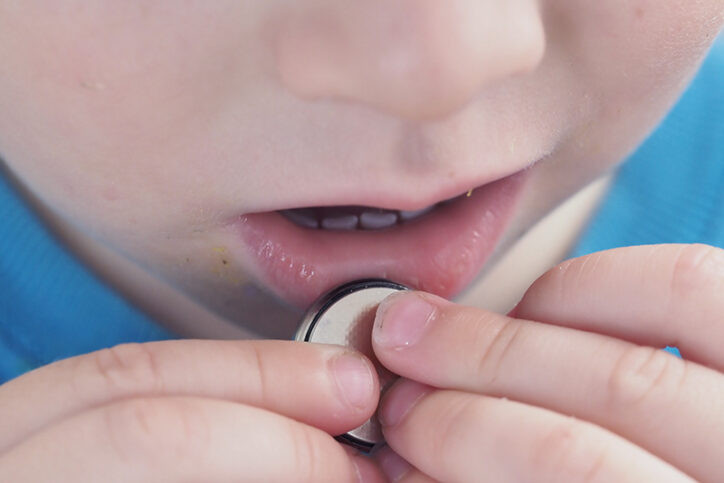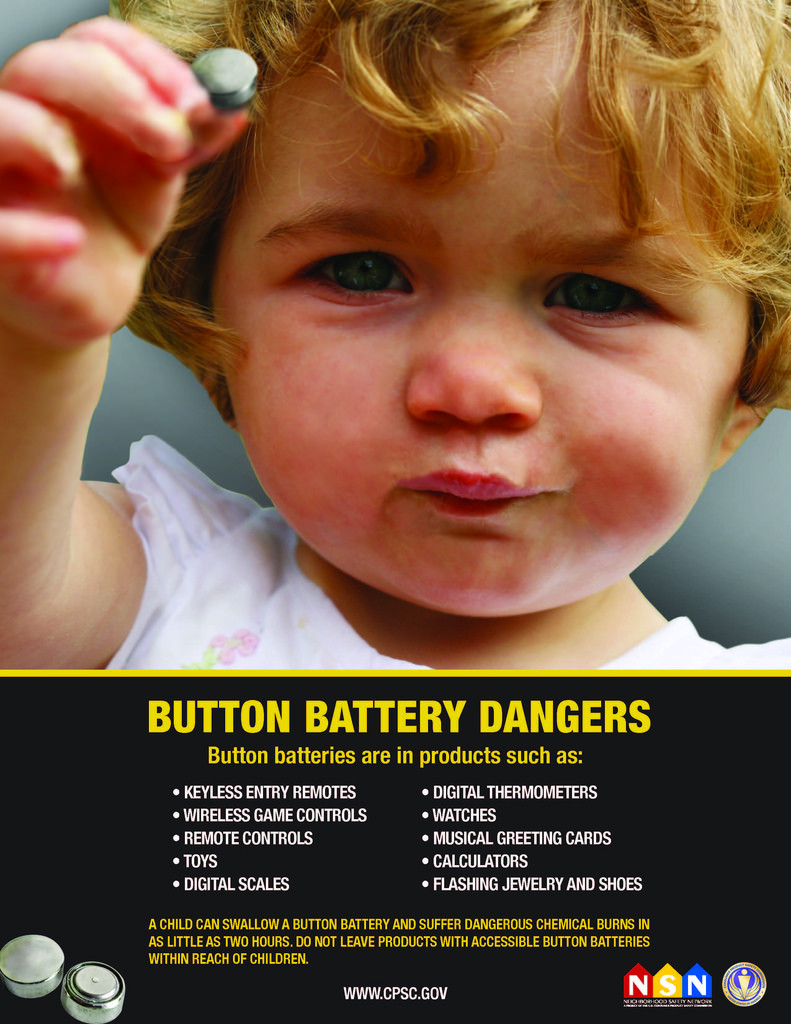Coin or button batteries are small batteries used in many children’s toys and other household items, including car key fobs, thermometers, and remote controls. The batteries are typically smaller than the size of a quarter, but slightly thicker.
According to the U.S. Consumer Product Safety Commission (CPSC), button batteries pose a serious injury risk for children who swallow them, often causing severe internal injuries and potentially life-threatening complications.
To reduce the risks associated with button batteries, the commission has proposed new safety standards for children’s toys, which were published on August 13 in the federal register.
Why New Safety Standards are Needed
When a child swallows a battery, the acid can leak, causing tears and burns to the esophagus, intestines, and stomach. In some cases, the battery might become lodged in the throat and cause a choking hazard, or become stuck in the intestines, resulting in the need for surgical removal.
In some cases, children have died after swallowing button batteries, highlighting the serious nature of the risk.
The CPSC indicates it proposed the changes since coin batteries are used more and more frequently in consumer products, and cause thousands of injuries for children every year. The CPSC indicates it received more than 70,000 reports of children treated in emergency rooms for button battery injuries from 2010 to 2019, including at least 70 deaths.
The Proposed New Safety Rules
The proposed rule will require any toy powered by a coin or button batteries to have a prominent label detailing the risk, as well as designs that make it harder for children to access them.
The CPSC said the rule would “provide the highest level of safety” for children using button battery-containing toys, and is consistent with the international standards for electronic toys and CPSC’s Reese’s Law, which went into effect in 2022.
Reese’s Law calls for secured battery compartments for electronics using button batteries or a tool required to open it, a warning on the package, a warning on the product, and a warning in the instruction manual.
The new rule calls for rigorous testing of children’s toys, including stress testing to ensure the fastened battery compartment remains secure throughout tension, compression, and other impact movements, such as those a child might make if they were treating a toy roughly.
It also would broaden the definition of toys subject to federal toy safety requirements, which the commission says would ensure the new requirements would apply to all devices.
Public Comments
The proposed rule is open for comment until October 15, 2024. Comments can be submitted to the CPSC using docket no. CPSC-2024-0023 via email, [email protected] or at https://www.regulations.gov.
A Call for Action
These new rules are a step in the right direction to protect children from the dangers of button batteries. However, parents and caregivers still need to be vigilant and take steps to prevent children from ingesting these batteries.
Here are some tips to help keep children safe:
- Store button batteries out of reach of children.
- Keep a close eye on children when they are playing with toys that use button batteries.
- If you suspect a child has swallowed a button battery, call 911 immediately.
By taking these precautions, we can help prevent more children from being injured or killed by button batteries.


















